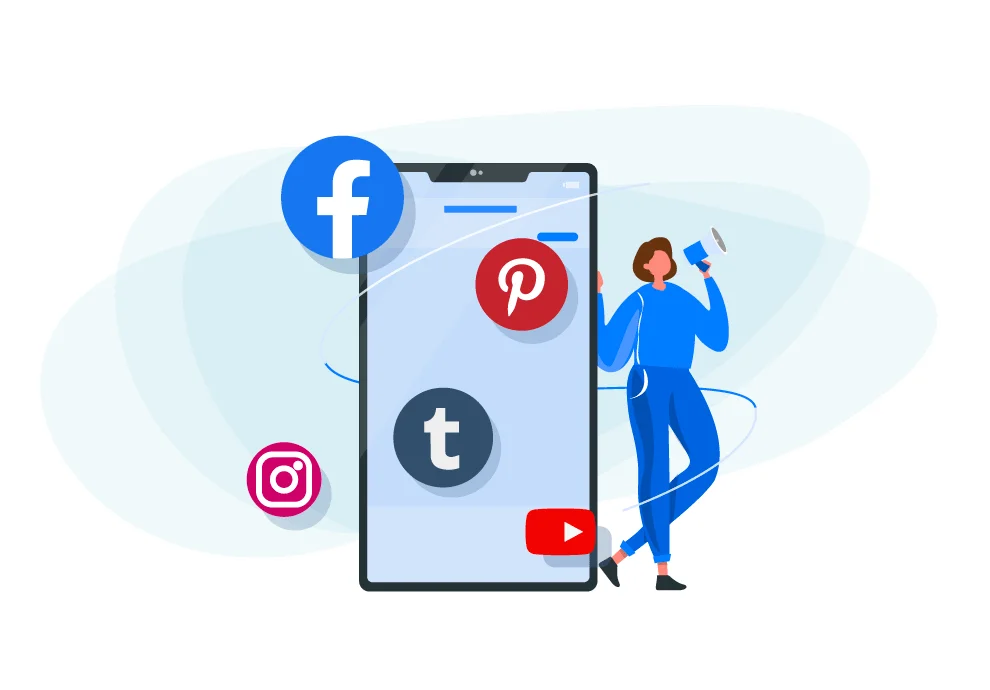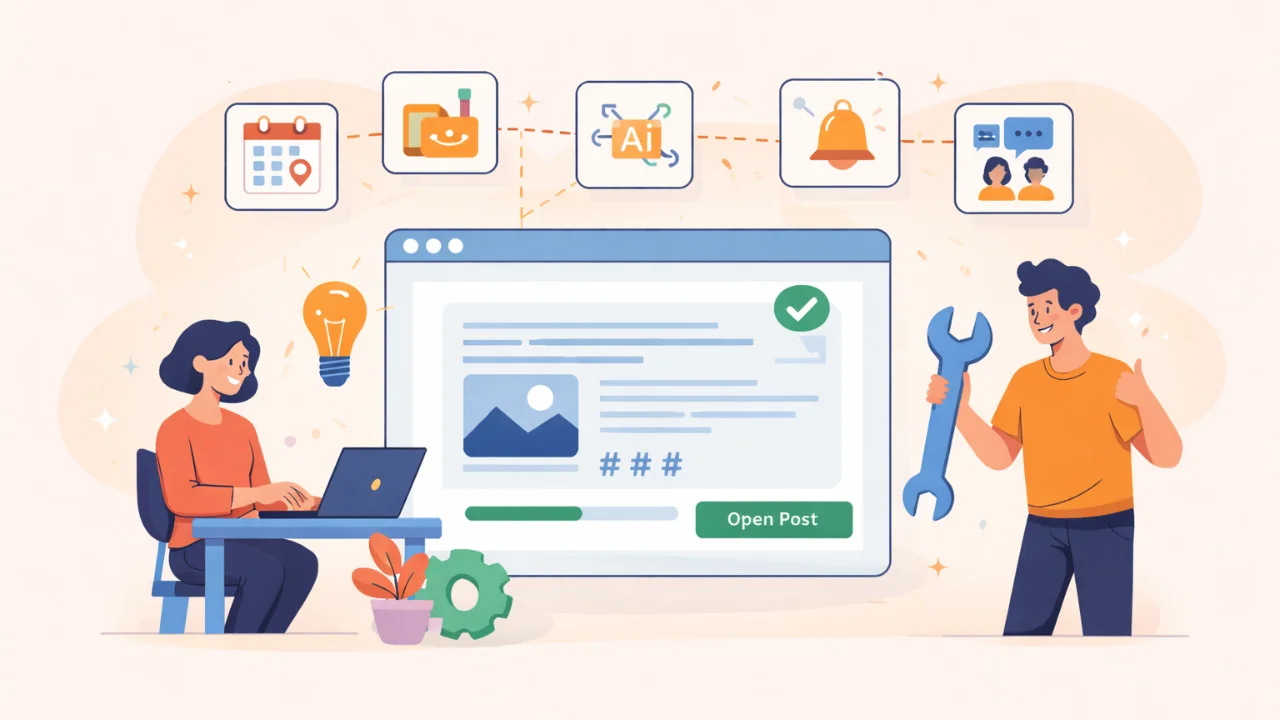Engagement is essential for any brand or influencer on social media. At its core, it shows whether you’re actually making an impact with your content. If you work on increasing your engagement and building meaningful connections, social media can become an effective platform for many business objectives. Keep reading to learn more about how to interact with social media users to your advantage.
What Is Social Media Engagement?
Social media engagement measures all interactions (likes, comments, shares, etc.) that users have with your content. Essentially, it shows how involved your audience is in your social media accounts. Although high engagement doesn’t always indicate that people interact with your content positively, it’s still an important metric to track.
Depending on which social media platforms we’re talking about, engagement metrics will be different. Some standard metrics used to calculate engagement are likes, comments, social shares, saved items, click-throughs, retweets, impressions, views, or reacts.
Why Is Engagement Important on Social Media?
There’s no guaranteed way to grow your media influence on social platforms without doing engagement. Any digital marketing expert will tell you that fan growth doesn’t matter if the audience isn’t interacting with your content. So, instead of only focusing on the follower count, use engagement as a reference point for your social media success.
Social media algorithms favor accounts that have a decent amount of interactions and promote this content more. If your fans are regularly liking, commenting, or sharing your posts, the algorithms assume that people are interested in them. So, the more you engage your audience, the more likely your content is to show up in their feed.
By working towards higher engagement, you also improve:
- Greater visibility in search results
- Your (personal) brand awareness and affinity
- Better results in word-of-mouth marketing
- Credibility
- Recognition and affinity of your company or personal brand
Engagement also showcases whether your content is reaching your target audience and whether they actually enjoy what you post. Subsequently, efforts to increase engagement help you build a community of active, loyal followers.
Understand the Components of an Engaging Post
People on social media are more likely to engage with brands that show off their “human side” and “personality”. They want to feel like they’re talking to real people behind brand accounts. Not only will it open up new potential engagement opportunities, but it will also ensure your audience trusts you.
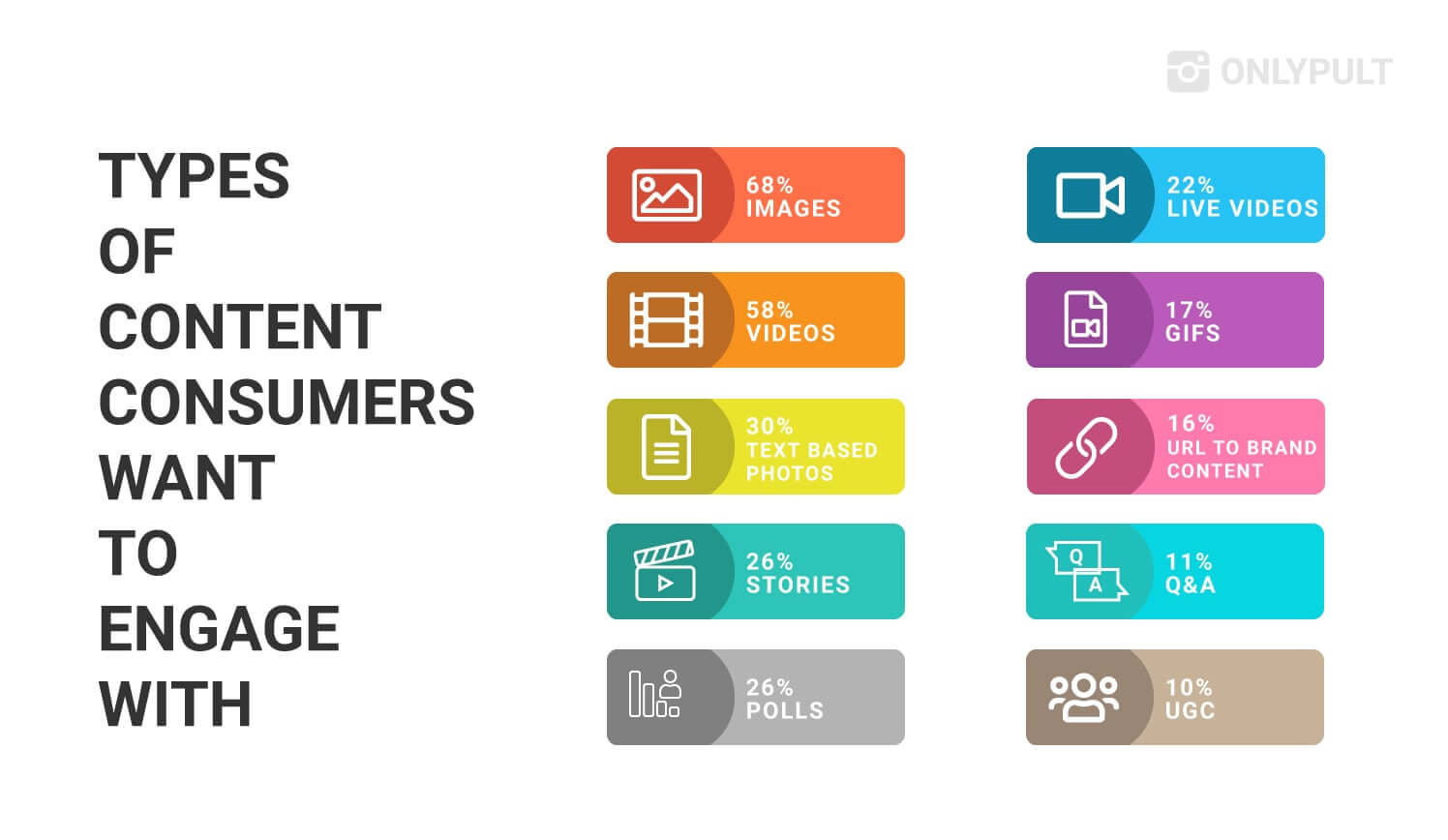
Here are a few key points that introduce digital business personality for an engaging post:
- Post content with mages. Attractive pictures attached along with text tend to receive more attention.
- Don’t forget the videos. It can be a demo video of your product or a quick look into how you provide your services.
- Offer an obvious point. Make sure people understand what you’re trying to say to give them the motivation to share your post.
- Ask questions. Answering questions makes people think. Just a quick question at the end of your post will provide a simple challenge and encourage users to process the content more attentively.
Executing Social Media Strategies
People are always looking for new content, and brands are expected to deliver it on a consistent basis. However, before you go to create creation and improve engagement, you need to build an engagement strategy.
Obviously, every social media channel requires a slightly different approach. In the beginning, decide which channels you want to focus on and do thorough research on what works there and what doesn’t. Here is an approximate plan before you put your strategies into action:
- Set your priorities
- Research your target audience
- Set important metrics to track
- Conduct competitor analysis
- Focus on timeliness and relevance
- Practice communication oriented toward goals in your team
How to Increase Social Media Engagement
While other brands are crossing their fingers, and hope that their followers suddenly start engaging with their content, take a different approach. Luckily, there are many ways that will help you increase social media engagement.
1. Define Goals for Each Social Network
We’ve briefly mentioned that each social media channel and messengers solve slightly different objectives for your particular business account. Look at each network individually and decide which direction you want to take it. Goals need to be useful, realistic, and trackable, and here are a couple of most common ones that most business accounts pursue:
- Brand awareness
- Community engagement
- Content distribution
- Sales/lead generation
- Customer support
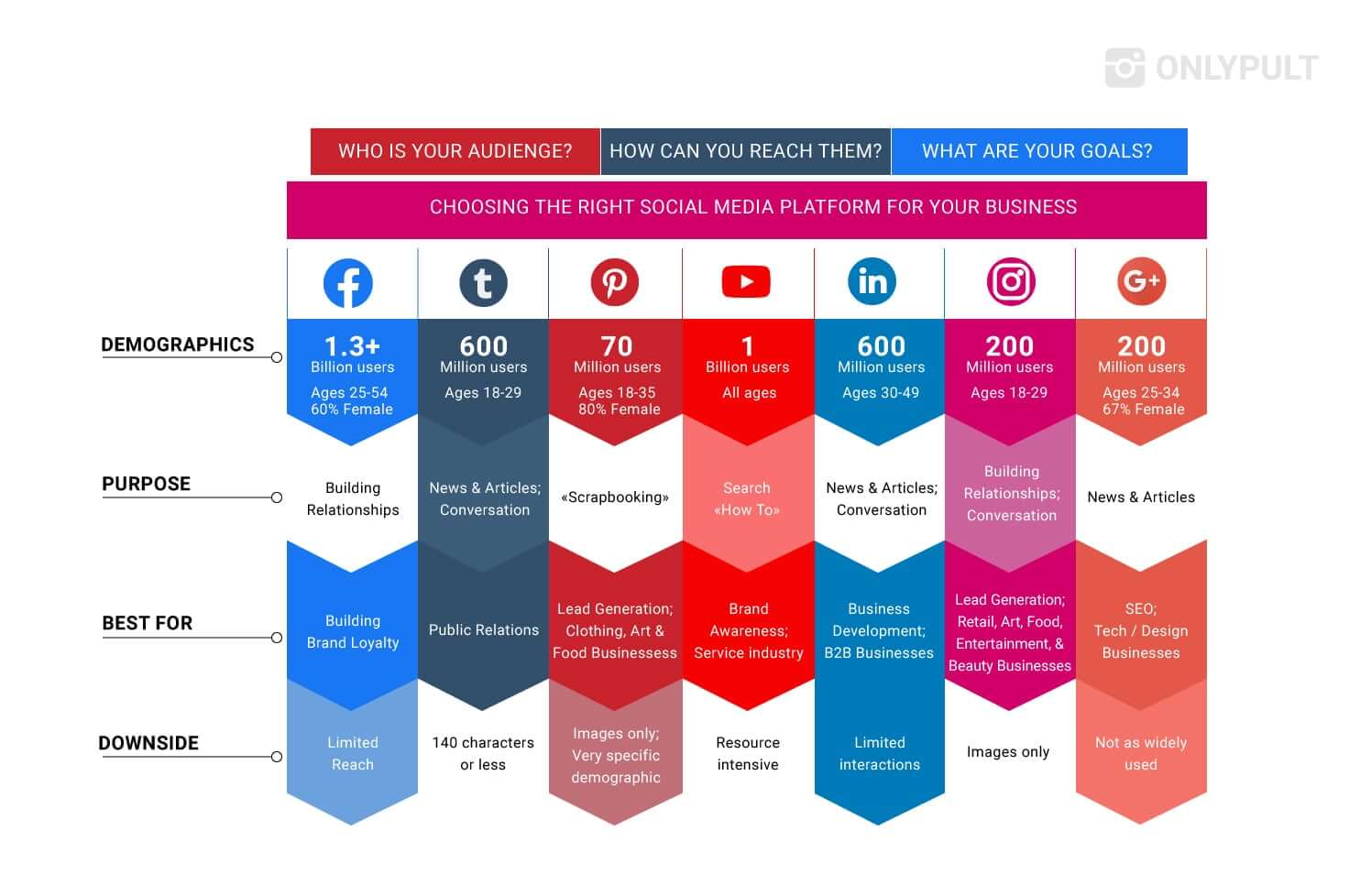
2. Make Quality Content
While there are many components that comprise good content, below are valuable objectives so that people stop scrolling and click on your link:
- Fulfill a need: answer questions, give insights, spark conversations.
- Excel in each chosen medium: Make everything as high quality as you can.
- Stand out: You can get really creative solutions for your photography, writing, video, and music.
3. Choose the Best Time to Post
You can start posting based on informed guesses, such as:
- Mornings and evenings during commute time
- Lunch and tea break
- Weekdays for B2B brands and weekends for B2C brands
However, then you will need to track whether the results correspond to your hypotheses. Your actual audience may behave differently, so always tailor strategies based on your unique case.
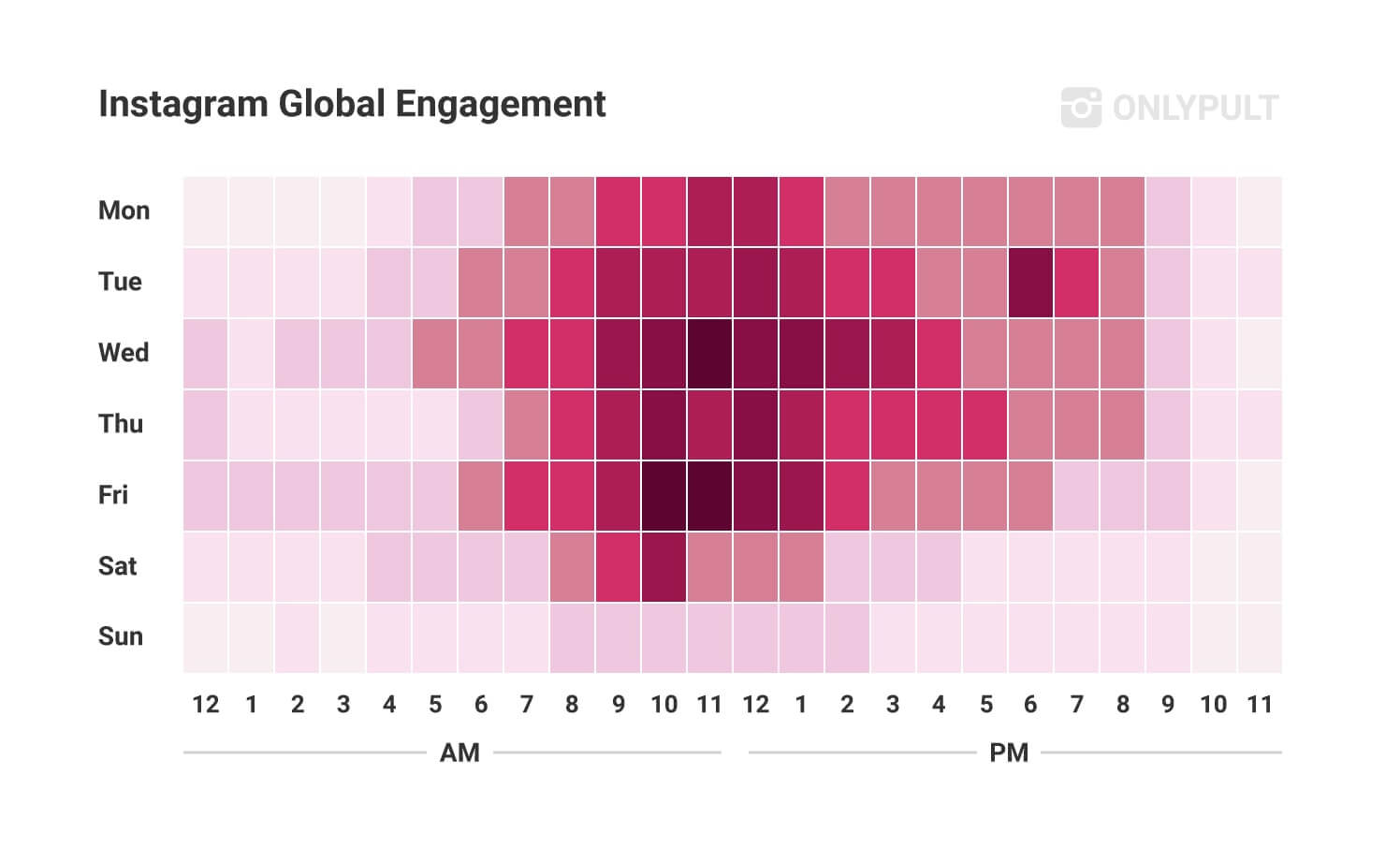
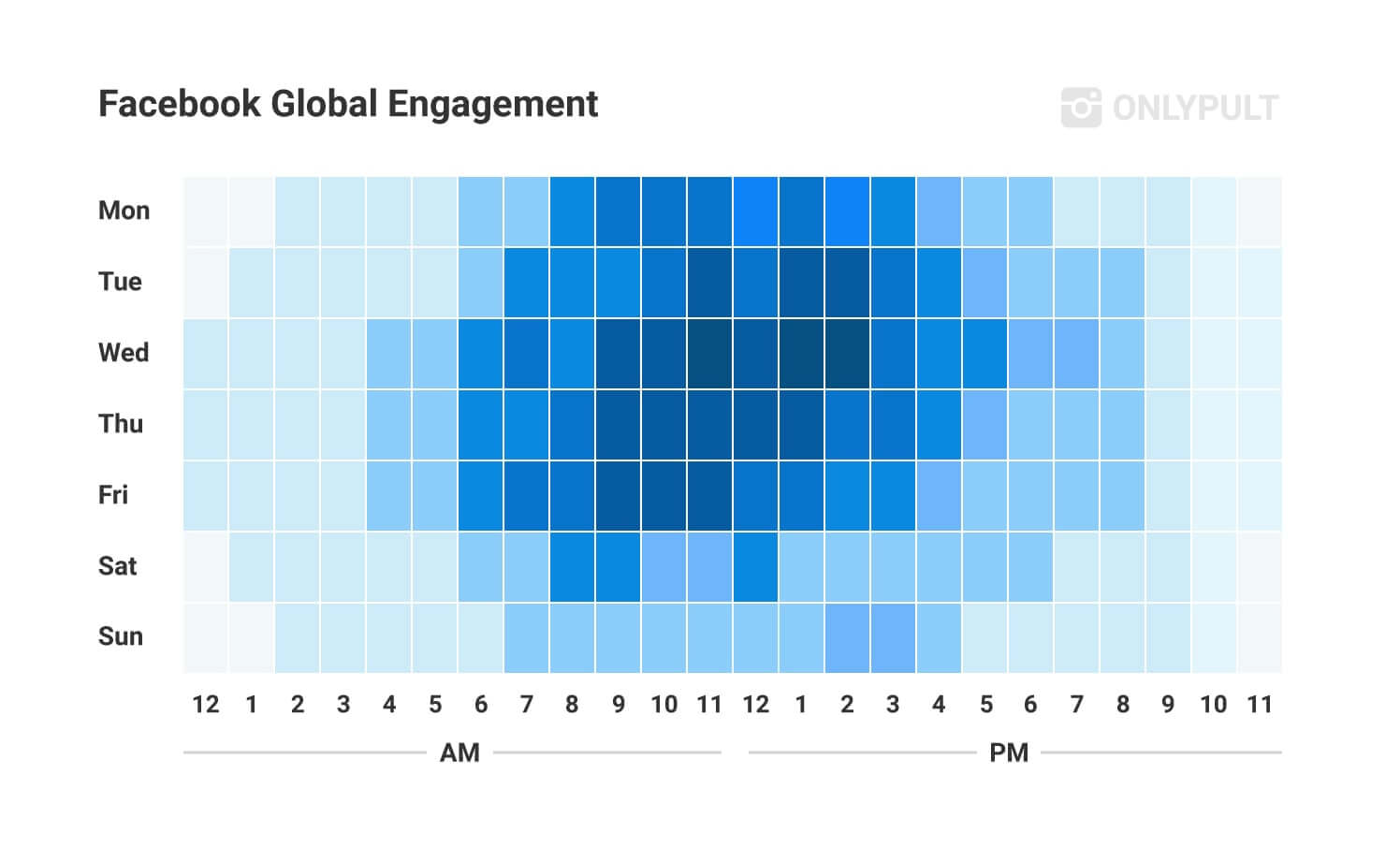
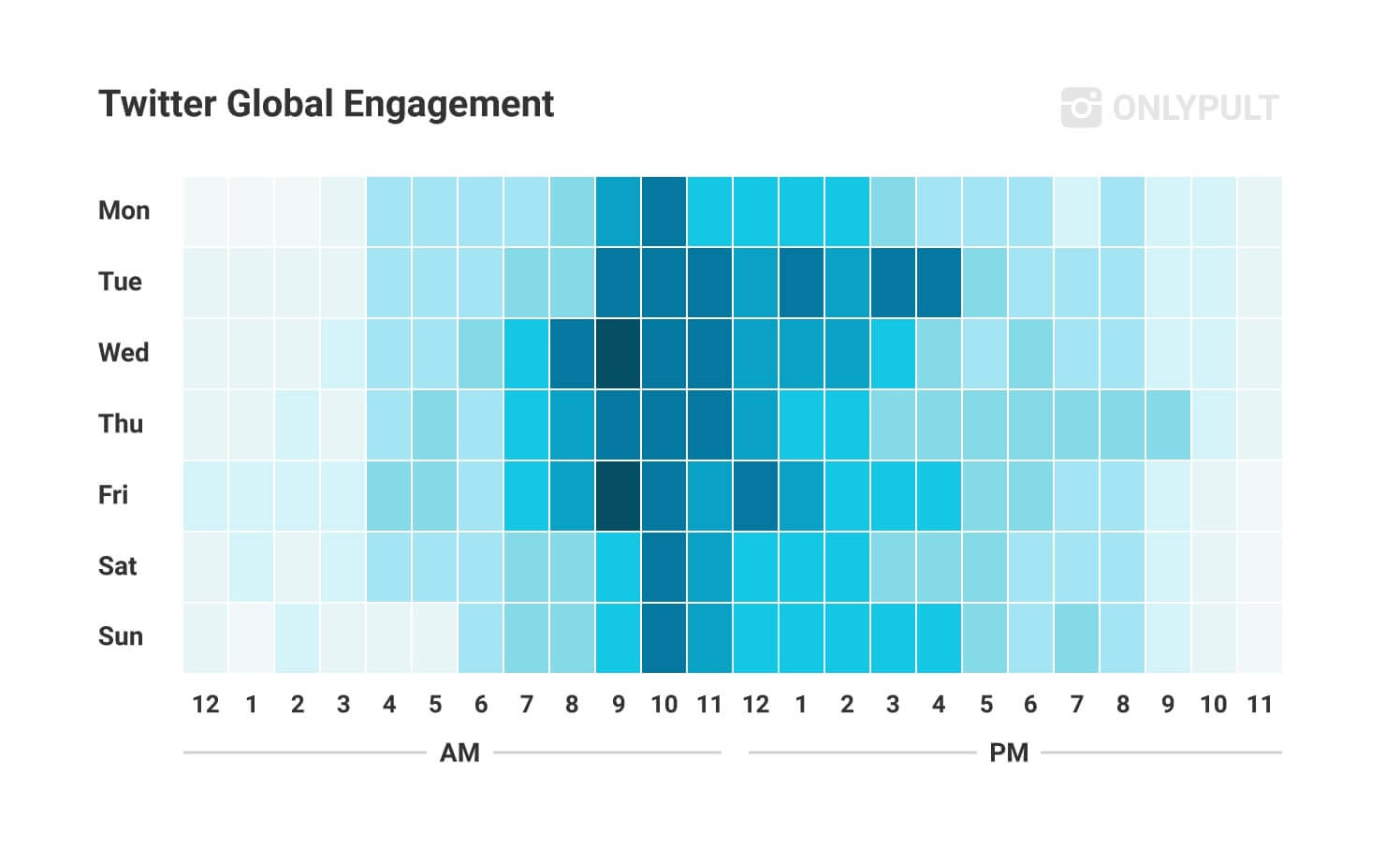
4. Get Feedback and Encourage Your Audience to Communicate
The easiest thing is asking your followers direct questions on social media to discover exactly what they think about your product, service, or even an event. As you can tell, it’s not only a technique for engagement but also for getting feedback instantly.
A slightly harder approach (but arguably more effective) is encouraging and monitoring comments and mentions. Gather customer sentiment, tone of voice, and key issues.
5. Use Hashtags Correctly
Be mindful of proper social media etiquette on each specific network. Generally, you’re not recommended to use more than 1-2 hashtags per post and keep them short and memorable. We’d also like to point out that it’s tempting to jump on every trending hashtag out there. But you will get much better results if it actually fits your image, message, content, and audience.
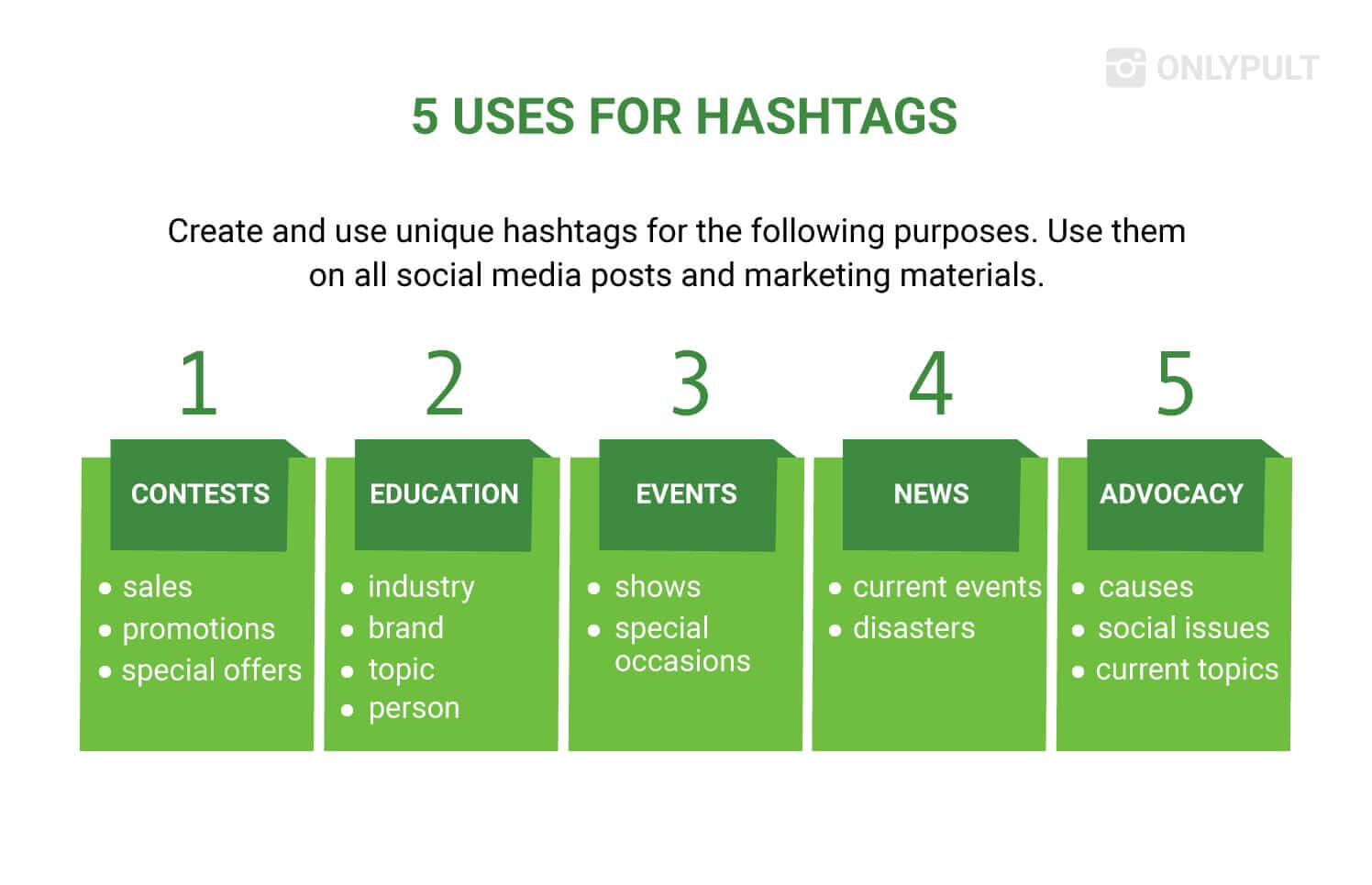
6. Post Stories and Broadcast Live
On most platforms, Live videos are given the number one priority in people’s feeds. In terms of engagement, imagine having your questions answered directly from a brand. This instantly brings a follower closer to your real-life. Bear in mind that it’s not for every niche and every product, but it can still deliver value to your audience.
7. Take Advantage of Contests and Promotions
Give people an incentive to engage – depending on the type of contest, you will see a significant increase in follows, likes, comments, or shares. Contests are an effective way to drive brand awareness and audience engagement without directly promoting yourself. Instead, you use user-generated content (UGC) promotion.
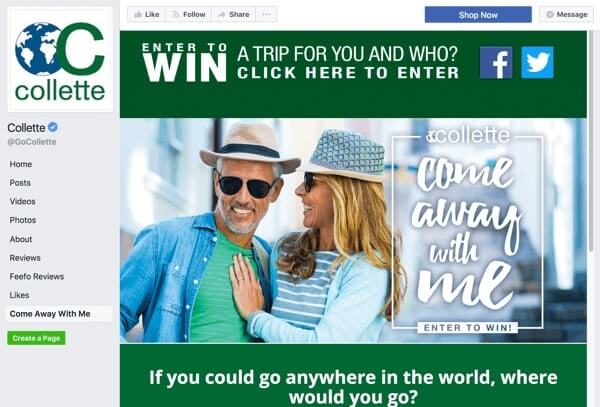
8. Try Posts on Controversial Topics
If you’re going to share something online, make sure it aligns with your company values, be ready and able to defend it, and be prepared for the consequences. It might sound daunting, but it’s a reminder that you don’t want to get into a real fight on social media.
Below are lighthearted examples of what kind of controversies do well on social media. This will stir up some heated conversations but not take it over the board.
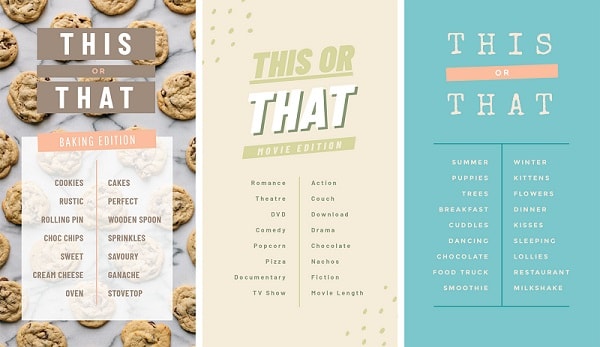
9. Use Paid Post Promotion
Paid ads are easily one of the biggest social media trends that helps targeted consumers to see your brand in their feeds. If you study target audiences on specific networks through demographic information, there is a high chance you’ll find people that will want to engage with your content.
10. Collaborate
The more input and collaboration pieces you put out, the stronger your industry partnerships will be. Also, you will get more backing from your community, colleagues, and other business partners. Other familiar faces and businesses can get your name further than you would on your own.
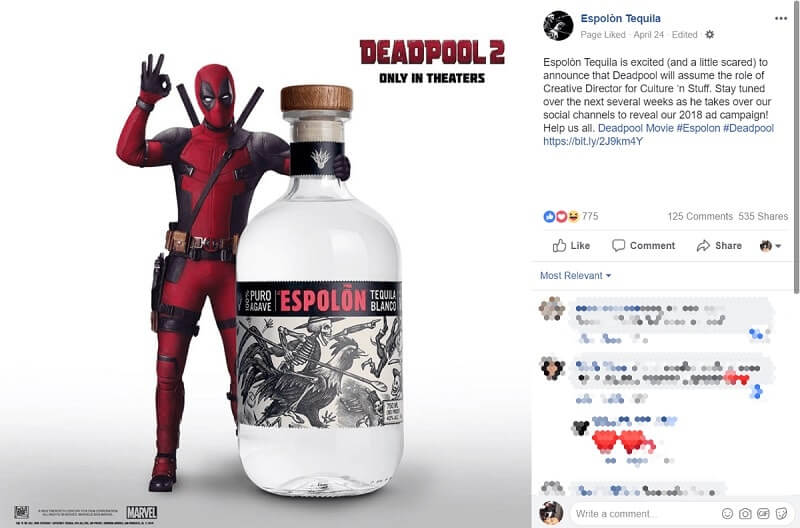
Tips and Tricks for Each Social Network
Just like you address different aspects of digital marketing, you need to generate particular plans for each platform you use. Consider all the nuances that will help you achieve the best engagement possible. Before we get started on the specifics, here is some general advice:
- Be consistent
- Focus your messaging
- Keep an eye on the current trends
- A/B test whenever possible
- Analyze direct and indirect results
Starting a Facebook page is very easy, but with the falling organic reach and engagement, it gets hard to grow. Our suggestions for boosting your page include:
- Keep it short. People are scrolling through the News Feed on their mobile devices very quickly, so you have very little time to provide an item of content. In the time you have, deliver something short and sweet.
- Get active in Facebook groups. Create a space for your fans to get active, and it will naturally promote your page as well. Also, you can connect with entrepreneurs and thought leaders within your industry.
- Use Facebook Stories. These are located right at the top of the screen, which makes it a great placement for drawing views. Choose a more informal way of storytelling to get more personal.
- Add a call-to-action button. This broadens your engagement options beyond likes and shares. Some CTA button examples are: book an appointment, contact us, watch a video, shop our products, download our app, etc.
Ultimately, you’ll need to test the strategies for yourself. For the time being, try out the following ones and see whether it drives both clicks and engagement up:
- Retweet other users’ tweets. Reciprocity is one of the best perks of being on social media. By retweeting your users’ content first, you’ll very likely win that user over.
- Respond when someone tweets to you. Whether someone is thanking you, asking you a question, or sharing their thoughts about your product or post, a response to that will work wonders.
- Use Twitter conversational ads. When a user clicks on this ad, the Tweet composer opens with a “pre-populated brand message”. This ideally spawns and inspires multiples organic posts that are tied to your brand.
- Know when to take conversations private. Public feed works great for the initial contact, and you should respond to customer service issues as much as you can. But when it’s time to dig into details, offer them DM or email support.
Compared to the early days of Instagram, here, engagement has become a lot more holistic. In a nutshell, you need to make use of everything that this platform offers. Here is how:
- Use Instagram Stories daily. Just like Facebook Stories, they are put at the perfect location. Stories with polling, question-and-answer boxes, quizzes, and countdown tickers tend to get higher engagement rates.
- Don’t forget about your caption. While Instagram is a very visual platform, you still have 2,200 characters to fill. Take this opportunity to showcase your brand’s voice or provide some context for the image.
- Geotag your posts. Show users that your store is a great place to visit and take some photos. Moreover, your photo will show up in the “Places” tab in Instagram’s Search and Explore section and drive more people.
- Use all of Instagram’s features. This includes signing up for Instagram Business, using different content formats (stories, videos, carousel posts, ads, and highlights), and checking out Instagram’s analytics to learn more.
YouTube
Figuring out the YouTube algorithm is something that many content creators have struggled with. We’ve analyzed multiple factors and came up with these main areas of focus:
- Maximize organic search results. Make sure to use descriptive and keyword-rich titles, quality and keyword detailed descriptions, tags, transcripts, and custom thumbnail images. Thumbnails are particularly important because they show up in the suggested videos section.
- Post links to your videos on your social media profiles. Cross-platform promotion is one of the most effective methods to funnel more people toward your video. You can also add different accompanying messages for each platform.
- Multiply your views by creating playlists. This minimizes the chance that a viewer will leave your channel and encourages them to binge your content.
Try Media Engagement Tools
It can be difficult to find the time and manpower needed to execute a comprehensive social media strategy. This is why you could make good use of social media tools. But remember that we won’t be able to mention everything that should be in a marketer’s toolbox.
Pictures Editing
Since most platforms require you to attach images for good engagement, you’ll need to learn the basics of photo editing. Start with high-quality cameras, so they’re clear and focused on the subject and somewhat adhere to the colors, style, and tone as dictated by the brand guidelines.
Then, you can head to one of the following editing apps (or a combination):
- Lightroom
- VSCO
- Adobe Photoshop Express
- AfterLight2
Analytics
Whether you’re laser-focused on only one platform or need an all-purpose solution, the right tool can give you the analytical answers you need. For example, you can use Onlypult’s analytics feature by clicking the corresponding tab. Here, you will find the number of posts, the total number of likes, comments for the selected time period, the average number of likes per post, and the average number of comments per post.
For convenience, sort it out by the previous week, last 7 days, previous month, last 30 days, previous year, this year. You can also print the report or export it to Excel spreadsheets to work with other team members.
Scheduling
The ability to effortlessly plan, organize, and deliver content and campaigns across social networks give you a big head start. If you want to roll out your content exactly at the right time, scheduling tools are just for you.
With the help of analytics, you will determine the best posting times and schedule your content for times of maximum engagement. For example, Instagram scheduling helps you target audiences in specific regions.
Analyze Your Current Engagement
How do you know if your social media engagement and strategy is working? You need to look at quantifiable parameters. While they don’t always tell you whether people engage for good reasons or not, it helps determine whether people are interacting with your brand beyond passive acknowledgment.
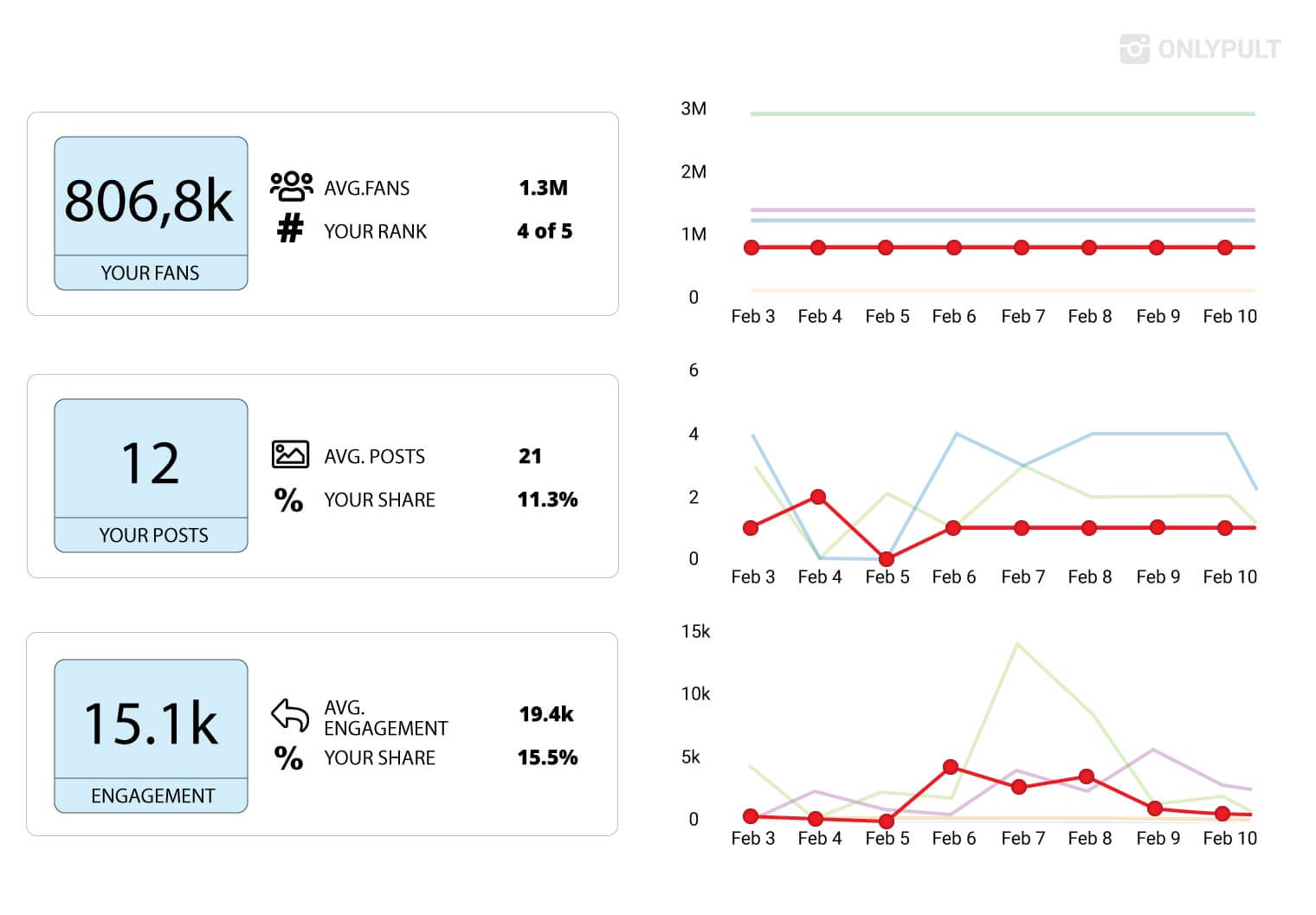
With so many analytics tools, you have plenty of metrics to track. To prevent getting overwhelmed with data, choose the most important ones for the engagement goals you established.
How to Measure Social Engagement
Let’s look at the standard method for measuring the effectiveness of your social media campaigns. The formula is as follow:
Engagement rate percentage = total engagement / total followers x 100%
By total engagement, we mean all your interactions summed up (shares, comments, reactions, retweets), and by total followers, we mean how many people follow your account.
For example, if a brand publishes a Facebook post to their 10,000 fans and receives 200 likes, 100 comments, and 50 shares. In this case, their total engagement will be:
(200+100+50) / 10,000 x 100% = 3.5%
There are also other formulas based on:
- Reach: ERR = total engagements per post / reach per post x 100%
- Daily engagement: EPR = total engagements in a day / total followers x 100%
- Views: EPR = total engagements on video post / total video views x 100%
- Impressions: ER impressions = Total engagements on a post / Total impressions x 100%
What Is a Good Social Media Engagement Rate?
Back in the early days of social media, 10% engagement rate was considered good. However, with changes in algorithms and the prominence of ads, organic reach has gone down significantly. These days, engagement on Instagram doesn’t usually get higher than 3-6%, and Twitter and Facebook can be as low as 1%.
Below are some figures that can tell you whether your engagement is good or bad.
| Engagement rate | Characterization |
| Between 1% and 3.5% | Average/good |
| Between 3.5% and 6% | High |
| Above 6% | Very high |
Conclusion
You should be treating social media engagement as an ongoing task. Before you see long-lasting results, it will take some time to get to know your audience and essentially time with them every day. Make sure to keep track of your analytics to measure your efforts.
Social media is a powerful instrument that helps influencers and brands connect with prospects, leads, and customers. And if you want to excel at it, use long-term and short-term strategies listed above. Then, social media will provide quick and friendly customer support, build affinity with our brand, grow our reach, and generate sales.
